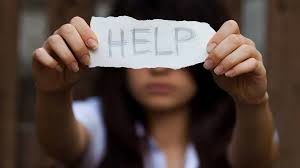Preventing teen suicide: Be alert to the warning signs

Dr Samir Parikh
Teenage years, or adolescence in itself has been identified as a crucial period, considering the rapid changes as a part of the developmental phases itself, coupled with dealing with the transition from childhood into the next developmental phase of life, bringing with it inherent anxieties, and confusions regarding the formation of identities, dealing with relationships and their own self-concepts. Within such a context, it is not surprising to understand the susceptibility of the youth towards experiencing high stress levels.
While not all adolescents who experience stressors are likely to experience depressive features, or resort to self-harm or suicidal behaviour, but there are a multitude of factors which interact together to lead to such a susceptibility, both proximal as well as distal factors. Some of the proximal factors could include some recent developments, like performance related pressure, high tension tasks, responsibilities at work, an environmental or psycho-social stressor, etc. On the other hand, some of the long-term distal issues could add to the vulnerabilities, pushing the individual in times of an actual or perceived crisis situation.
What is important to understand is that a suicidal mind, regardless of age, gender, or any other demographic variable, tends to be filled with many despairing and negative emotions that begin to overwhelm the individual. In such circumstances, a sense of hopelessness and helplessness can cause a person to resort to suicide as the only means available, as they tend to feel helplessness, and do not feel that they could change the present, feeling that circumstances are beyond their control.
Some of the warning signs that signal the need for intervention especially for a suicidal teenager could include the following:
Social withdrawal or isolation. If we observe a teenager becoming increasingly withdrawn, avoiding interaction with friends or family, preferring to stay alone or aloof, or becoming increasingly quiet; this could be a major warning sign, as a red flag for depressive features, or even suicidal ideation.
Sudden changes in mood, including crying spells, irritability or anger outbursts. It should be noted as an alarming sign if the teenager is showing an increased emotional reactivity, with disproportionate emotional outbursts to hitherto trivial situations, which could be in the form of crying spells, irritability or grouchy behaviour, or anger outbursts, which make the individual’s behaviour seem unpredictable in nature, and with such changes being sudden and unexplained in nature.
Dysregulation of appetite or sleep patterns. It is also important to be vigilant for sudden and unexplained changes in the person’s sleep or appetite, including excessive sleep or lack of sleep.
Increased risk-taking behaviour. Often an increase in the teenager’s risk-taking activities like driving, or substance abuse could be warning signs of a manifestation of a mood disturbance, which could be a potential trigger for low impulse control or suicidal intent.
Feelings of helplessness or hopelessness. Teenagers who are extremely distressed are likely to experience feelings of helplessness and hopelessness, with a lack of control and a sense of despair clouding their minds. Some of the red flags to indicate such feelings could include their talking about the futility of any efforts in the future, disinterest in planning the next step or any goals for the future, showing an interest in or talking about death or suicide, etc., which could seem to be contrary to their usual predisposition.
Dr Parikh is Director and HOD, Department of Mental Health and Behavioural Sciences, Fortis Healthcare



